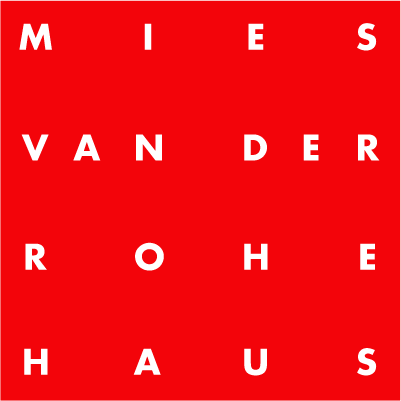2021
2021 . SPACE-TIME-ODYSSEY
Annual Program
With the annual theme SPACE-TIME-ODYSSEY, the program not only takes up the special qualities of Mies's building, but also picks up on various themes of modernism, such as Sigfried Giedion's famous cultural-theoretical publication "Space, Time, Architecture: The Growth of a New Tradition" and refers to the year 2020, which is phonetically reminiscent of Stanley Kubrick's science fiction cult film "2001: Odyssey in Space". The development of Hermann Minkowski's space-time continuum in 1907 and the emergence of Albert Einstein's General Theory of Relativity in 1916 also had a major influence on the arts. For example, Paul Klee and Wassily Kandinsky were concerned with the visualization and awareness of space and time in their works and writings, including ‘point and line to area’.


EXHIBITIONS
GOWN IN THREE ACTS
17.01.-20.06.2021
Curators: Jan Maruhn, Dominik Olbrisch, Annika Weise
The program will be told in 2021 in an exciting way, since the first exhibition connects two Berlin Mies-Orte, the Haus Perls and the Haus Lemke. Also, the up-and-coming expressionist Max Pechstein is placed in a relationship with the young architect Mies. The building's owner, Martha Lemke, also comes to life in a journey through time that leads from the picture to the real garment. A photograph by the Bauhäusler Howard Dearstyne was the inspiration for the reconstruction or reinterpretation of a garment. A replica of Martha's dress serves to make the so-called physical space, its boundaries and surface tangible and visible. An artistic installation by the Berlin artist Stef Heidhues brings the different time levels into dialogue with each other by playing with the form and design elements of modernism.
Cooperation partners for the exhibition are the Kunstsammlungen Zwickau - Max-Pechstein-Museum, the Parzival School, the Kupferstichkabinett Berlin and Galerie EIGEN + ART.
TK2130-5/8-19 - TADAAKI KUWAYAMA
04.07.-03.10.2021
With his dictum "less is more", Mies van der Rohe strongly influenced the art of the 20th century; especially minimalism. The Japanese artist Tadaaki Kuwayama (*1932), who lives in New York - his work is just being rediscovered internationally - establishes a special case in the field of minimalist art. His works are intended to create an intense and subjective experience. With "no statement, just feeling," according to Kuwayama, he refuses any theoretical appropriation. With his monochrome works, freed from any signature, the artist invites the viewer to experience a wide space of thought and experience. In combination with the contemplative atmosphere of the Mies van der Rohe House, a wonderful coincidence of art and architecture is created. Tadaaki Kuwayama had been on the wish list of the house for many years. A visit in the Bauhaus year, together with his wife Rakuko Naito, then brought the acceptance. The exhibition is curated by Dominik Olbrisch.

FALLING THROUGH TIME AND SPACE - GREGOR HILDEBRANDT
10.10.2021-27.03.2022
For the first time in the history of the Mies van der Rohe Haus, an exhibition plays on the entire expanse of the outdoor space. The Obersee also becomes a reflection surface. Gregor Hildebrandt has realized a grandiose work for the house - diverse and poetic at the same time. Hildebrandt's installation, a black sail woven from magnetic tapes, was hoisted on the Obersee only for a short time at the beginning of the exhibition. A bronze peasant chess piece, more than two meters high, marks the garden space. The two opposite exhibition rooms of the L-shaped Mies van der Rohe house are conceived as a positive-negative space and thus also set in relation to each other beyond the architectural by means of art.



